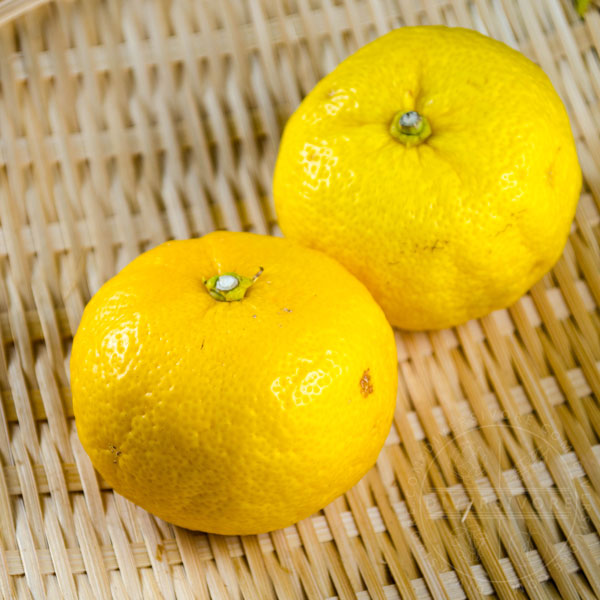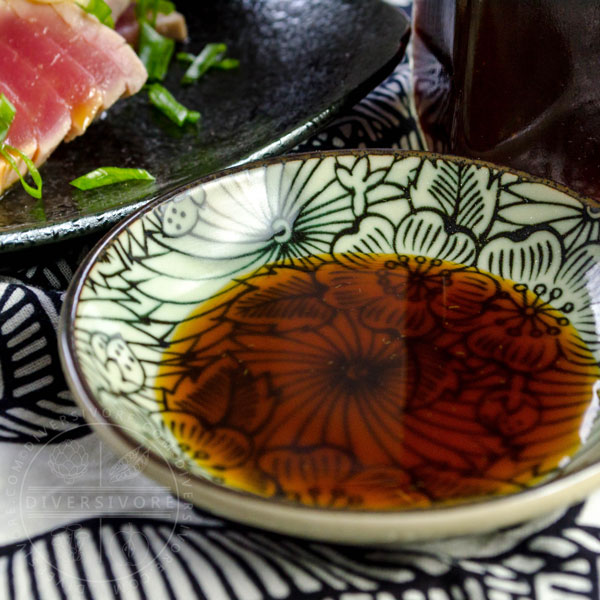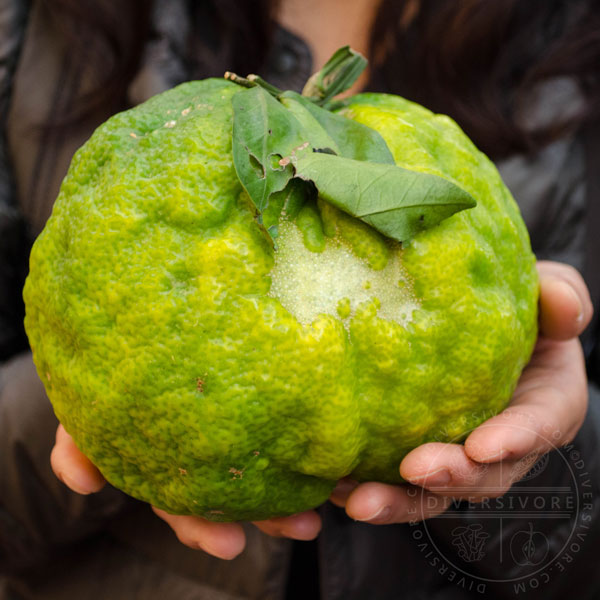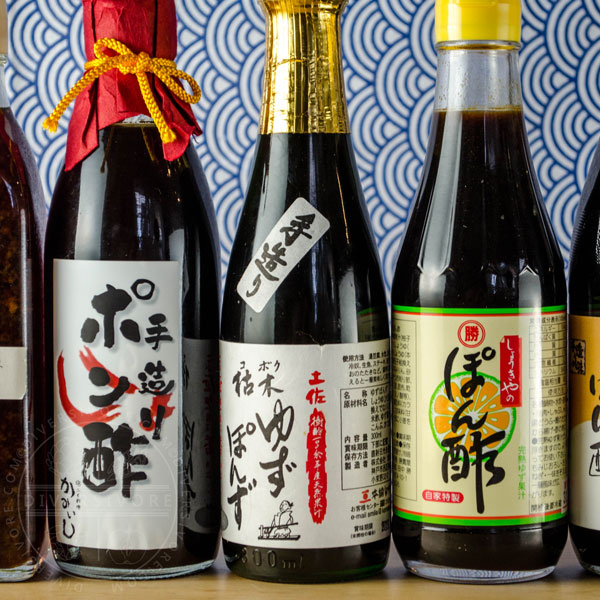How to Find, Choose, & Use
Yuzu
Citrus junos

Share this Guide
The Basics
What Is It?
A sour, highly fragrant variety of citrus (family Rutaceae) native to East Asia. Yuzu is strongly associated with Japan, but is also grown and used in Korea and China.
Seasonality
WINTER (Can be frozen and used year-round)
Flavour Profile
Sour, acidic (juice), highly fragrant, with a distinct and unique flavour, somewhat reminiscent of lemon with an herbal quality.
Other Names
Japanese: Yuzu - 柚子 (kanji); ユズ (katakana); ゆず (hiragana)
Korean: Yuja - 유자
Chinese: Xiāng chéng - 香橙
Scientific: Citrus ichangensis × Citrus reticulata
Yuzu FAQs
What does yuzu taste like?
Yuzu tastes something like a combination of lemon, orange, and grapefruit, with a slightly herbal quality that's difficult to put into words. That being said, the taste of yuzu is only one part of the picture; much of yuzu's culinary appeal derives from its powerful and highly unique fragrance.
Is yuzu the same as pomelo?
Yuzu is very different from pomelo, but there is a linguistic overlap that can cause confusion. The Japanese and Korean names for the fruit (yuzu and yuja respectively) both derive from the Chinese 柚子 (yòuzi). However, this word has shifted in meaning in modern Chinese, and now refers to the pomelo fruit instead.
Yuzu and pomelo have very little in common, aside from the fact they're both citrus. Pomelo is much larger than yuzu, with a much thicker pith, and sweet flesh that's generally enjoyed fresh.
Is yuzu a type of lemon or citron?
Yuzu is not a type of lemon or citron, and is instead a completely separate citrus fruit. Citrons are one of the few wild citrus species (i.e. a variety that did not arise through relatively modern hybridization). Lemons are thought to be a hybrid offspring of the citron, most likely crossed with bitter orange. Yuzu, on the other hand, is thought to be a hybrid of mandarin oranges and a little-known citrus called papeda.
In terms of everyday culinary use, lemon and yuzu are probably the most similar to one another, though they do differ in numerous and considerable ways. The two fruits have very different fragrances, and lemons tend to produce more juice and fewer seeds.
Why is yuzu so expensive?
Yuzu tends to be expensive due to two main factors: supply and demand, and agricultural controls. Japan grows most of the global crop, and much of this is used domestically and/or processed for juice. Much of the Korean crop is likewise processed to make preserves, which are popular for making yuja tea. Outside of Asia, commercial yuzu production is fairly small, meaning that supply is often quite limited. In addition to these issues of supply, concerns over the transmission of certain crop diseases means that whole Japanese yuzu may not be easily exported to other citrus growing countries. Japanese yuzu can be exported to Canada (for example), but not to the USA, where citrus is a major commercial industry.
How-To
Find
Whole yuzu can be exceptionally hard to come by outside of Japan and Korea. It is grown on a small (but growing) commercial scale in California and Australia, but is uncommon in most grocery stores. Yuzu juice can be found with relative ease at many Japanese grocery stores (see "Need More Details?" below and Substitution Notes in the next section).
Choose
Look for bright, fragrant, relatively unblemished fruit. Yuzu can feel quite soft, as the relatively thick skin does not cling tightly to the underlying fruit.
Prep
Difficulty: Low to Moderate - Yuzu is exceptionally easy to peel, though this isn't a common preparation method. The fruit is generally squeezed (whole or in halves) to extract the juice, often saving the peel and pith for separate use. The flesh and membranes are easy to remove, but there are numerous large seeds.
Use
The juice is used raw or cooked in a variety of dishes. It is used much the like vinegar in savoury dishes, while desserts tend to emphasize the unique fragrance and bright citrusy flavour with added sugar. The peel can be used fresh or dried in sweet and savoury dishes. Unlike many citrus fruits, the white pith is not very bitter, making the peel quite easy to use.
Store
Ripen: Room Temperature
Short Term: Refrigerate
Long Term: Freeze whole
Culinary Info
Flavour Profile
Sour, Fragrant, Slightly Bitter (NOT Sweet); Highly aromatic with a powerful and unique scent and flavour (especially in the zest). Somewhat akin to lemon, but with an herbal quality and a distinctive perfumed fragrance.
Substitutions
It is very difficult to substitute for yuzu. Lemon and citron are somewhat similar in some respects, but yuzu has a distinct flavour and highly distinct aroma all on it's own. In many cases, the best substitute for whole yuzu is bottled yuzu juice and lemon zest. (see Substitution Note below).
Cuisines
Yuzu is particularly important in Japanese and Korean cuisines. The juice is often used as a vinegar substitute in sauces (etc.), while the fragrant peel is used in a variety of sweet and savoury dishes. Yuzu is becoming increasingly popular in modern and fusion cuisines around the world.
Flavour Pairings
Savory: Lighter meats like fish, pork, and chicken; soy sauce, dashi, and other Japanese staples; parsley, cilantro, chilies, scallions.
Sweet: Cream, yogurt, fruit, milk chocolate.Varieties
There are a few different yuzu cultivars (see Varieties note below), but they're not usually differentiated at a culinary or commercial level. There are a also a few yuzu variations, but they tend to be exceedingly rare. Most commercial yuzu is grown on trees that have been grafted to a root stock, but seed-grown (misho) yuzu can fetch a premium as a gourmet product.
More Info
Nutrition
Very high in Vitamin C.Nutrition FactsYuzu - 100 g (3.5 oz)Amount Per ServingCalories 30% Daily Value*Sodium 2mg0%Carbohydrates 10g3%Fiber 3g13%Sugar 2g2%Protein 2g4%Vitamin A 75IU2%Vitamin C 29mg35%Calcium 30mg3%Iron 1mg6%* Percent Daily Values are based on a 2000 calorie diet.Top-To-Tail
The fruit is entirely edible or usable, including the skin (zest and pith), flesh/juice, and seeds. See Top to Tail/Use Notes below or details.
GMO Status
Non-GMO
Health & Science
As with grapefruit (and many other citrus), yuzu may interact with certain classes of drugs. That being said, this interaction seems to be considerably milder in yuzu than in grapefruit or pomelo. See Health and Science Notes below for more detail.
Organic vs. Conventional
Yuzu is grown with both organic and conventional methods, though availability may be limited in many markets. Unless explicitly stated, assume that yuzu (or any citrus for that matter) is grown using conventional methods.
Yuzu Recipes
Ponzu Shoyu (Coming Very Soon!)

More About Yuzu on Diversivore
Share this Guide





